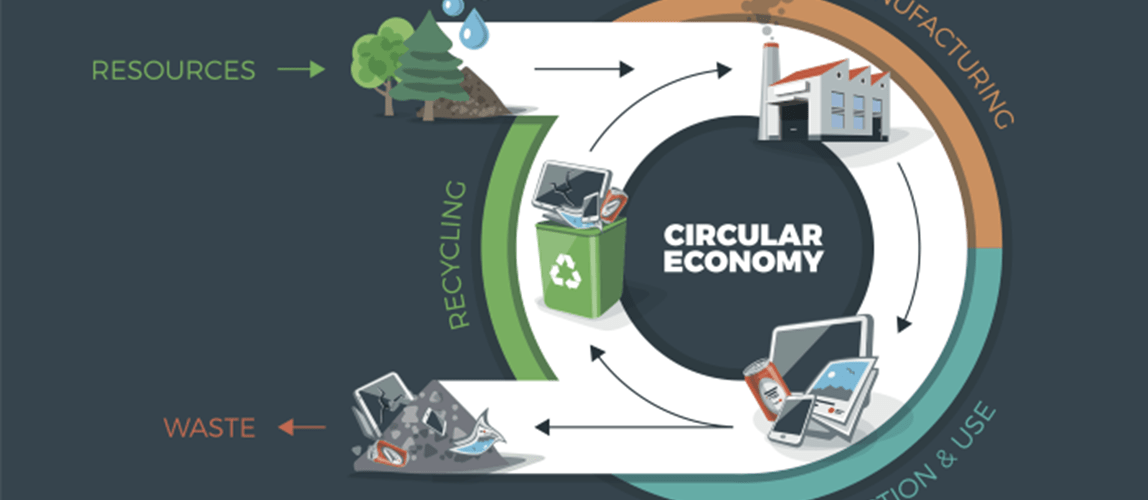Introduction to Innovations in Resource Management

Innovations in resource management focus on optimizing how natural resources are extracted, used, and recycled to minimize waste and maximize value. In mining, these innovations involve technological advancements, data analytics, and new approaches that improve operational efficiency, reduce environmental impacts, and enhance social benefits. Let’s explore the latest innovations that are transforming the mining industry.
Smart Resource Management Technologies

New technologies are making it easier for mining companies to manage resources more effectively. These innovations help companies maximize resource extraction while minimizing waste and environmental impacts:
- Internet of Things (IoT): IoT sensors help monitor equipment and resources in real-time, allowing for predictive maintenance and more accurate resource tracking.
- Artificial Intelligence (AI) and Machine Learning: AI models optimize mining processes by analyzing large datasets to forecast trends, improve decision-making, and reduce energy consumption.
- Big Data Analytics: Advanced analytics techniques allow mining companies to process vast amounts of data, gaining insights into resource availability, consumption patterns, and environmental impacts.
Circular Economy in Mining

The circular economy model promotes the reuse, recycling, and repurposing of materials, reducing waste and demand for raw resource extraction. In mining, this approach is applied through:
- Recycling of Mining Byproducts: Waste materials from mining, such as tailings, can be reused for other industries or turned into valuable products.
- Closed-Loop Systems: Mining operations are moving towards closed-loop systems, where water, chemicals, and energy are continuously recycled to reduce the need for external resources.
- Reclamation and Rehabilitation: After mining operations are completed, lands are rehabilitated to restore natural ecosystems, often incorporating recycled materials and sustainable land management practices.
Innovations in Mining Equipment
Technological advancements in mining equipment are driving energy efficiency and reducing environmental impacts. Some notable innovations include:
- Electric and Hybrid Equipment: The use of electric and hybrid trucks, loaders, and drilling equipment helps reduce carbon emissions and fuel consumption.
- Automated and Autonomous Machinery: Automated systems reduce the need for human labor, increasing operational efficiency and safety while minimizing fuel use and emissions.
- Advanced Drilling Technologies: New drilling techniques reduce energy usage and waste production, enabling more precise extraction of resources with minimal environmental disruption.
Energy Management in Mining

Effective energy management plays a key role in reducing operational costs and carbon emissions in mining. Innovations in energy management include:
- Renewable Energy Integration: Solar, wind, and hydroelectric energy are being integrated into mining operations to replace fossil fuels, reducing carbon footprints.
- Energy Storage Systems: Advanced energy storage systems, such as batteries, allow for the storage of renewable energy to be used during peak demand times, improving efficiency.
- Energy Optimization Algorithms: Machine learning and AI are used to optimize energy consumption patterns, ensuring that energy is used efficiently across all mining processes.
Challenges and Future Directions
While innovations in resource management are promising, challenges remain in scaling these technologies and overcoming obstacles such as:
- High Initial Costs: The upfront investment in new technologies can be prohibitive for smaller mining companies.
- Technological Complexity: Integrating advanced technologies into existing mining operations can be complex and require skilled labor and new expertise.
- Regulatory Barriers: Governments may impose regulations that slow down the adoption of new technologies or increase operational costs.
As these innovations evolve, the future of resource management in mining looks more sustainable, efficient, and eco-friendly. However, continued research, investment, and collaboration between governments, companies, and communities are essential for achieving long-term sustainability goals.